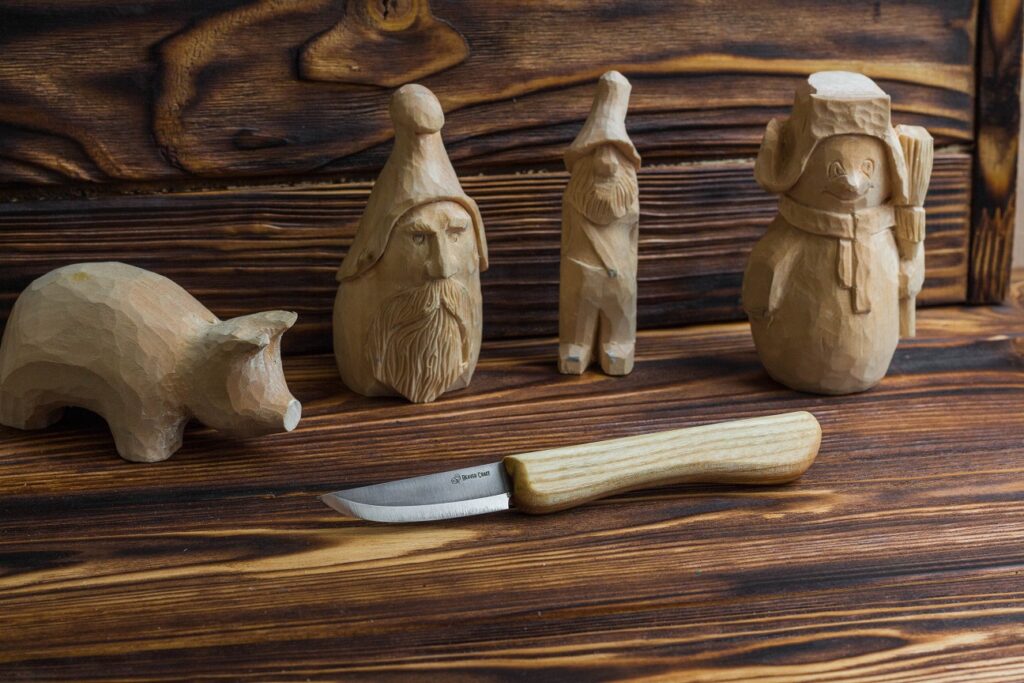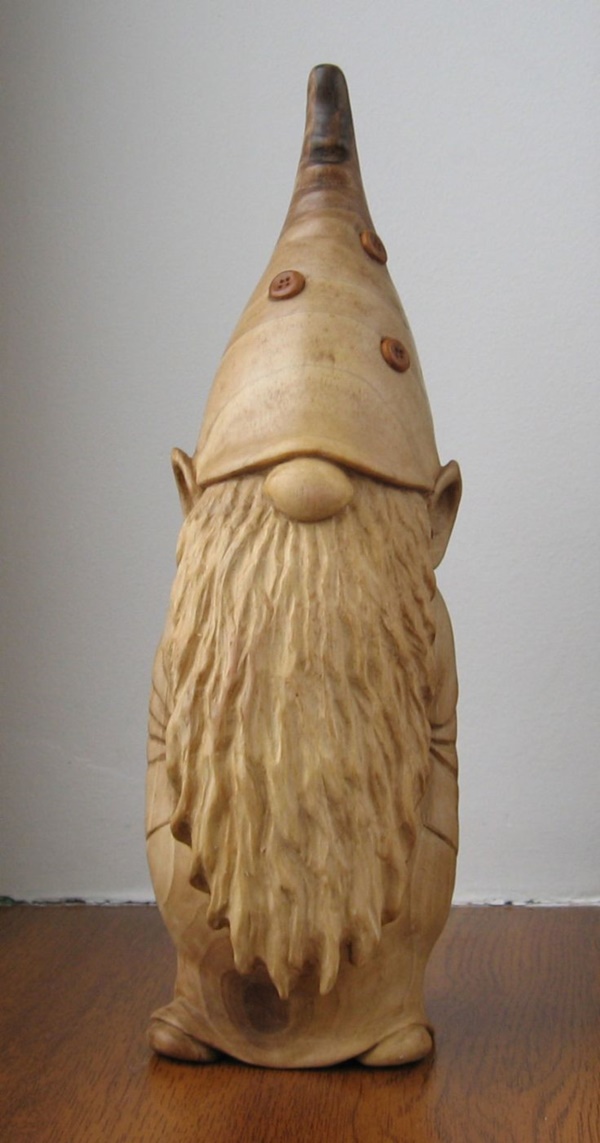
A chisel makes a great beginner's woodcarving tool. It can be used to chip carve, decorate surfaces, and cut patterns into wood. This knife has a strop and maintains its sharpness well. Its ergonomic handle makes it an ideal choice for beginners. It can be sharpened quickly and comes with an unlimited lifetime guarantee. It is small enough to fit in small spaces. The chisel can also be sharpened using a strop.
Beavercraft detail knife
A BeaverCraft detail tool knife can be used to cut fine details or create intricate designs. It is easy to use and safe. The flexible blade ensures greater precision and fine detail. Its ergonomic handle gives you maximum control, making it safer. This tool is not sharpened or stropped like other wood carving knives. It can be used straight from the box.
The BeaverCraft Universal Detail Pro Knife, a lightweight carving knife that is specifically designed for detail work, is a great choice. Its narrow blade makes it possible to perfect finish details, as well as cut deep shapes and refine hard-to reach parts. It is manufactured from high-quality steel carbon and can be used immediately. For comfort and firm grip, the handle is made from hard ash and impregnated with Linseed Oil. The manufacturer also recommends a rust resistant steel blade to prolong its life.
Beavercraft gouge scorp
There are many different types of wood carving knife you can choose from if you are considering purchasing one. The gouge is used for small pieces. Gouges have a curving blade, while chisels have a flat blade. Gonges are needed to cut off lumber marks. A V-scorp, a gouge spar, or a crochet knife are the best tools for removing wood marks.
Other types of carving knives include the splinter carving knife. This type includes a vscorp, or a 1.5-inch gouge. They're simple to use and are made of durable carbon steel. Finally, too large scorps can cause problems with your carving. You should ensure that you choose the right knife for your needs.

Another popular type is the spoon carving hooked knife. It is a good choice for greenwoodworking. The knife's tempered steel blade is razor-sharp right out of the box. It has an oak handle that is finished with natural Linseed Oil, which makes it easy to use and ergonomic. This is not the best option for beginners as it doesn't lock or have a locking mechanism.
Beavercraft chisel
A chisel, a tool that can create intricate pieces of woodwork, is great. It's durable, flexible, and allows you to make precise cuts without using your hands. It's safer to use thanks to its ergonomic handle. The handles are oil-impregnated and have been sharpened. The three pieces allow for carving portraits of any size and shape.
The BeaverCraft chisel makes a great addition to your woodworking tools, whether you are a beginner or an expert. It's lighter than a knife for easier portability. The chisel is also available separately to carve different kinds of wood. For a more comfortable grip, it comes with a 12-pocket leather strop as well as a tool roll.
Beavercraft scorp

A carving knife is a must-have if your passion is to carve. A carving knife is essential for carving. This tool will allow you to make fine details and add lines. They are also called a "scorp" and come in various sizes. These tools can both be used for wood and metal carve, and you can choose the right size based on your project's complexity.
Beavercraft's scorp set includes five cutting tools, including a hook knife and straight gouge. The set includes a V scorp and chisel. You will not be able lock them so that they can be used safely. A nail puller can be used to remove nails from wood. They feature an ergonomic handle and silver aluminum inlay.
FAQ
Where can I find free woodworking plan?
Woodworking plans can be found online without the need to purchase books or magazines. Search Google for free woodworking plans. Enter "free woodworking", and you will see hundreds upon hundreds of websites offering free plans.
How can you calculate woodworking pricing?
Remember to keep costs as low as you can when calculating project costs. Always ensure you are getting the best possible price for materials. Also, consider all other factors that can affect the price of your projects such as skill level, experience, time and cost. Our guide to the average household DIY task price will give you an idea of how much it costs to complete different types of woodwork projects.
Where can I find my woodworking tools?
There are many places where you will find everything that you need. For example, you could visit local hardware stores or look online at websites like Amazon.com.
You can also check garage sales and flea markets for old furniture and other materials you can reuse.
What is the minimum investment a hobbyist needs to make in order to get started?
You will need capital to purchase the tools and supplies you need to start your woodworking business. The best place to start is by buying a small drill press, circularsaw, circular saw or sanding machine. These items aren’t too expensive so you won’t have to break the bank.
How long does a piece take to finish?
It all depends on what type of wood you use, how complex your design is, and how much finishing you use. Hardwoods are more difficult to maintain than softwoods. Hardwoods are more expensive than other woods. But they last longer, and resist moisture better. Finishing furniture can take anywhere from one week up to three months.
Can this be a way to make money?
Yes! In fact, most woodworkers already have it. According to the U.S. Bureau of Labor Statistics' (BLS), in May 2012 the median annual wage of woodworkers was $34,000 This is more than the national average of 31,000 per annum.
What is the average time it takes to finish furniture?
It all depends upon the size of your piece of furniture. Smaller projects like boxes and picture frames can be finished within one day. Larger projects, like desks or dining tables require several days. It takes time for the wood to be stained and sealed properly.
Statistics
- Most woodworkers agree that lumber moisture needs to be under 10% for building furniture. (woodandshop.com)
- Overall employment of woodworkers is projected to grow 8 percent from 2020 to 2030, about as fast as the average for all occupations. (bls.gov)
- Woodworkers on the lower end of that spectrum, the bottom 10% to be exact, make roughly $24,000 a year, while the top 10% makes $108,000. (zippia.com)
- Average lumber prices rose about 600 percent between April 2020 and May 2021. (familyhandyman.com)
External Links
How To
How to stain wooden surfaces
Stain wood is a process that involves applying chemicals to the surface of wood, which changes its color. This chemical reaction changes the wood's color from white to brownish. Oak is the most commonly used wood for staining, but other woods can also be stained.
There are several ways to apply stains to wood surfaces. Some methods include mixing the stain along with a solvent like turpentine and then applying the mixture to the wood by brushing or spraying. You can also apply a solution containing water and dye directly to the wooden surface. It is possible to mix stain into varnishes and paints, making it part of the finishing coat.
Preparing the surface for staining wood is the first step. To apply the stain, clean the wood completely. Sanding smoothens any scratches or rough spots. Then you must decide what kind of stain you want to use. There are two types of stains that can be used: penetrating and non-penetrating. Penetrating stains penetrate deeper into the wood than non-penetrating ones, making them ideal for dark colors such as mahogany. Light colors such as maple work well with non-penetrating stain.
After you've decided what type of stain to apply, get ready for your tools. You can use a paintbrush to apply stains. This allows you spread the liquid evenly over the surface. To remove any stains left behind after painting, you will need some rags. If you are planning to mix your stain, ensure you have enough containers for each component.
Once you have prepared your materials, start by cleaning the area where you plan to stain the wood. To remove dirt and dust, use warm water and soap. Wipe the entire piece of furniture with a rag dampened with clean water. If you intend to stain darker wood, make sure you get rid of any debris.
Next, spray the stain. The stain can be applied by spraying or brushing the stain onto one end of the furniture. You should work slowly and carefully. Continue moving along the grain until you reach your opposite end. Make sure that the stain does not drip off the edge of the wood. Before moving on to the next steps, allow the stain drying completely.
To protect the painted surface, apply a coat of clear polyurethane sealant. Apply three coats of polyurethane sealer. Allow the third coat to dry overnight, before sanding.